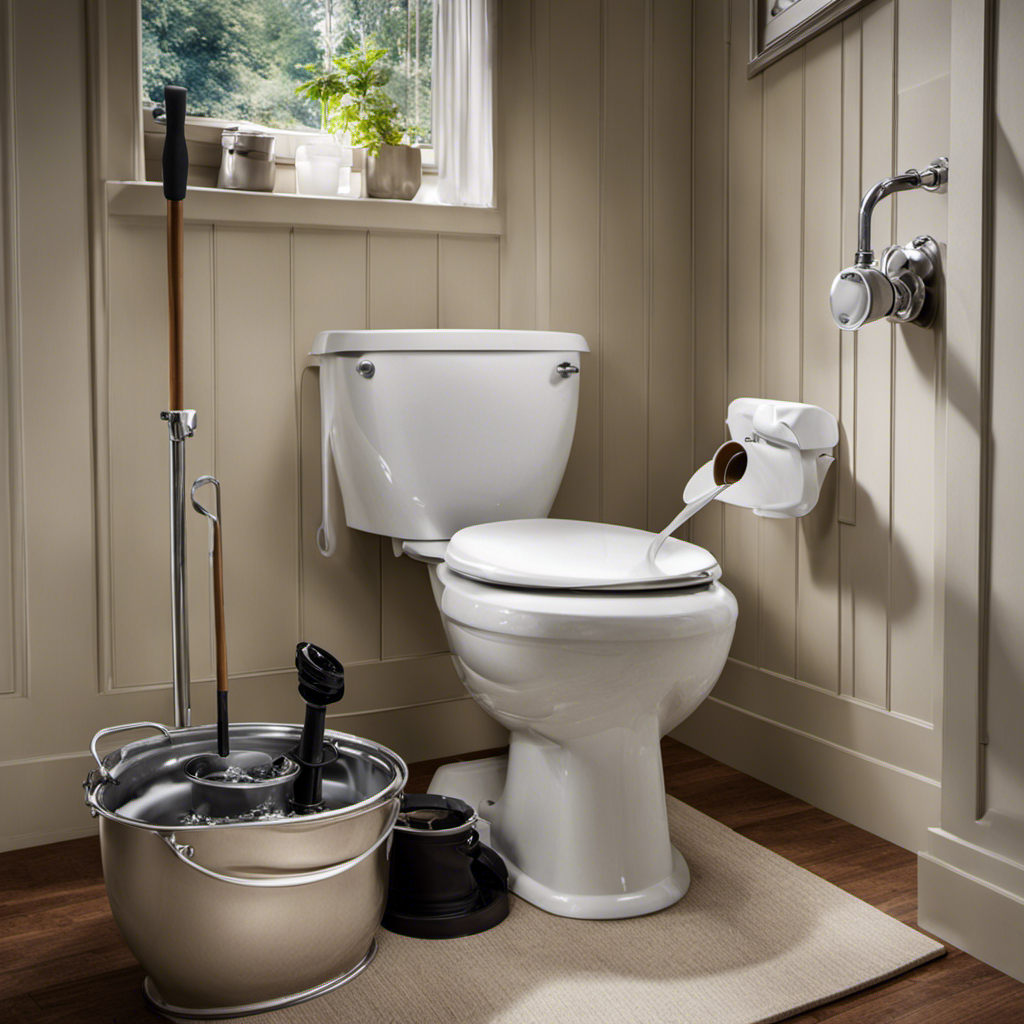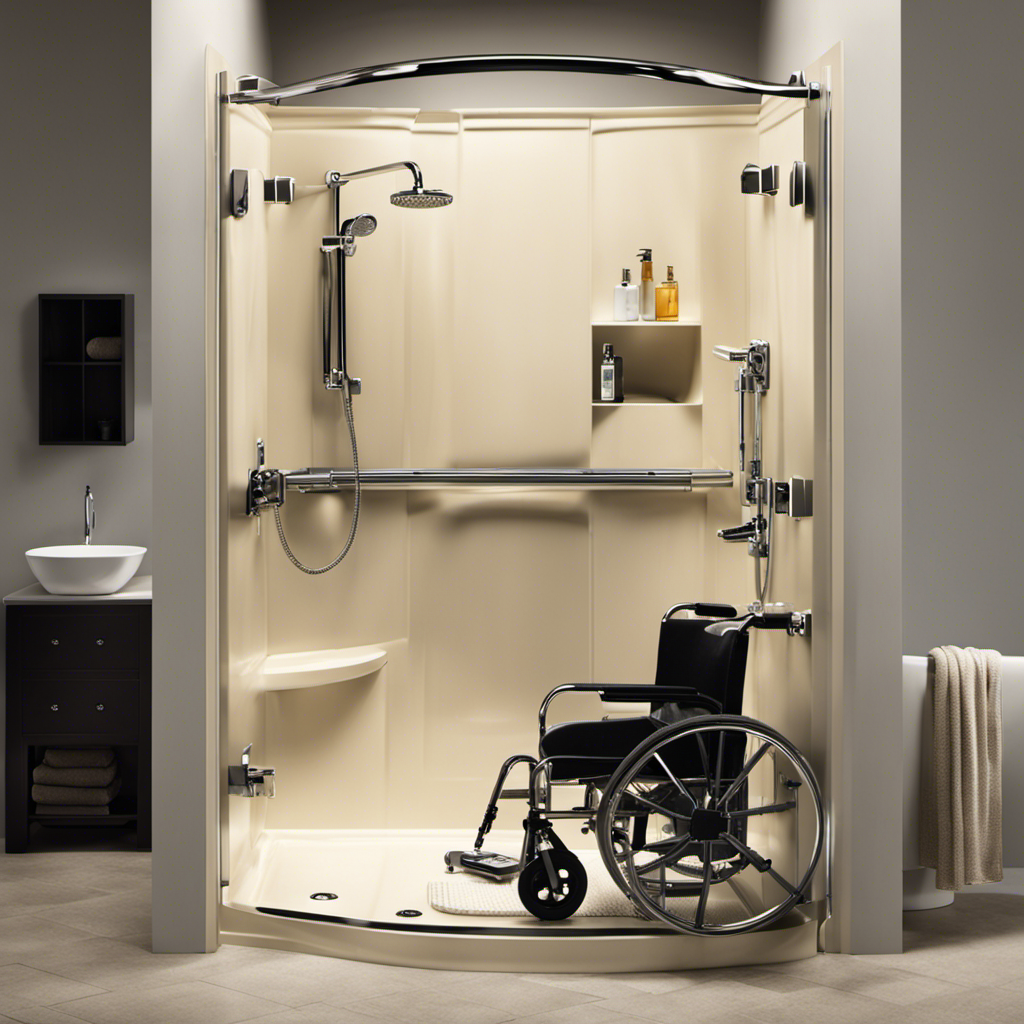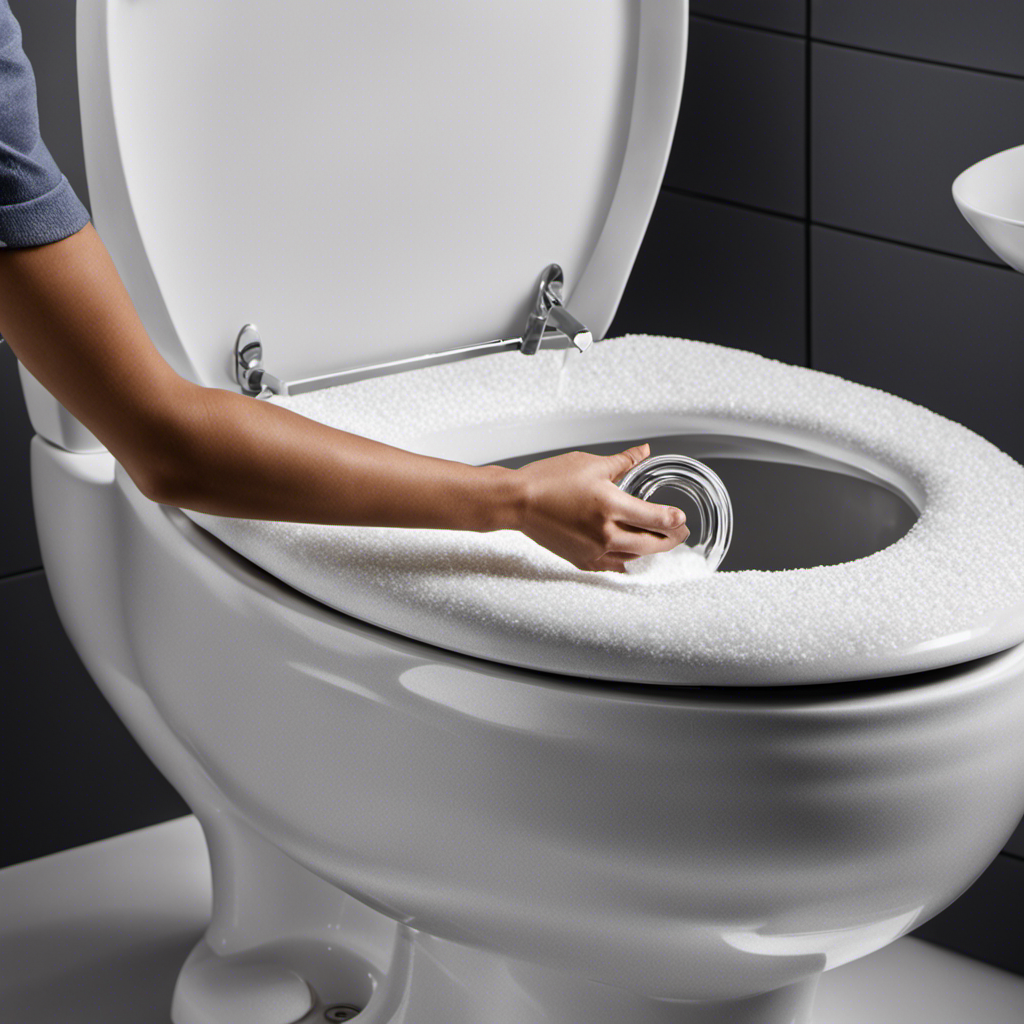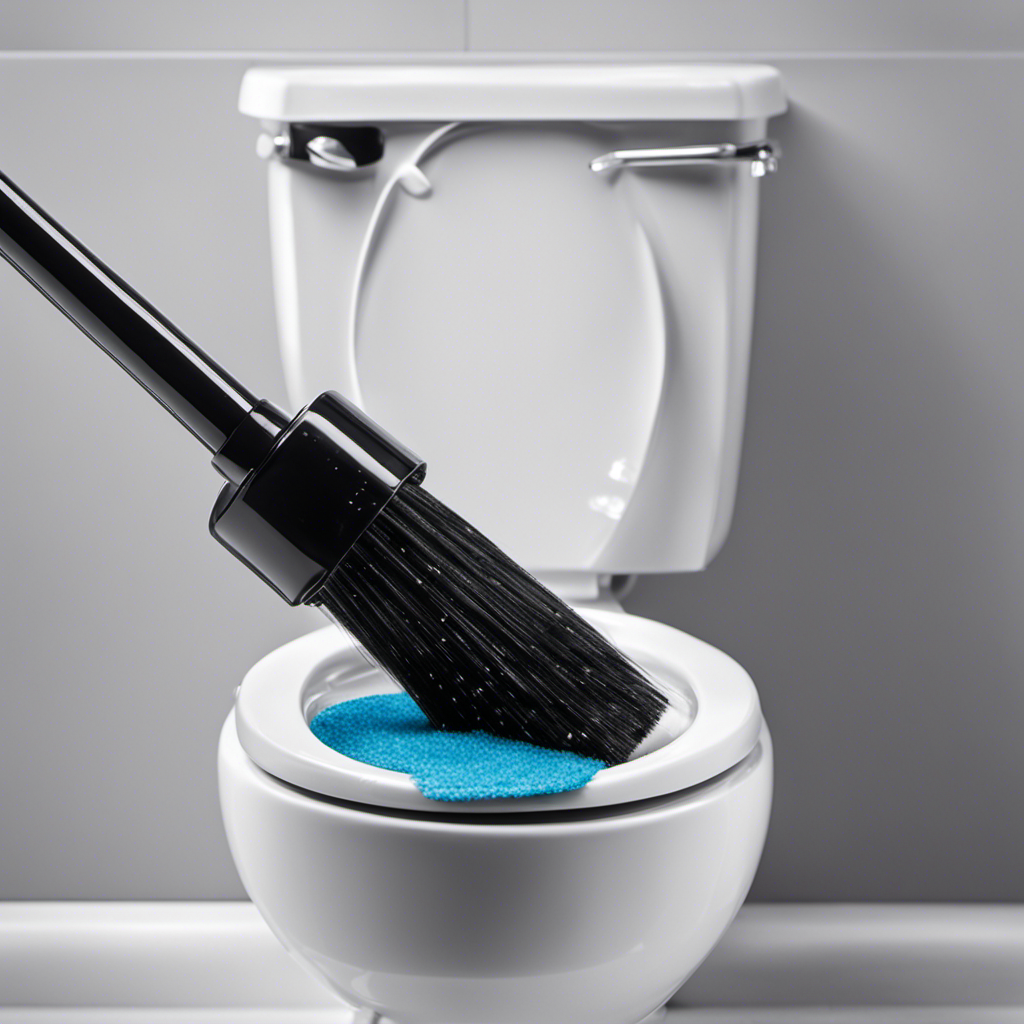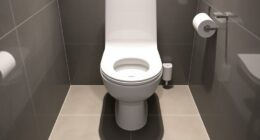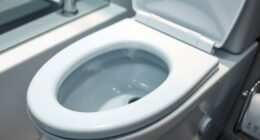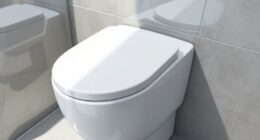Imagine finding yourself in the midst of a power outage, desperately wondering how many flushes your toilet can handle.
In this article, we will explore the factors that affect toilet flushes during a power outage, provide the average number of flushes without electricity, and offer tips for conserving water in such situations.
Additionally, we will discuss alternative options for flushing toilets without power and provide essential supplies to prepare for a power outage.
Let’s dive into the mastery of managing flushes when the lights go out.
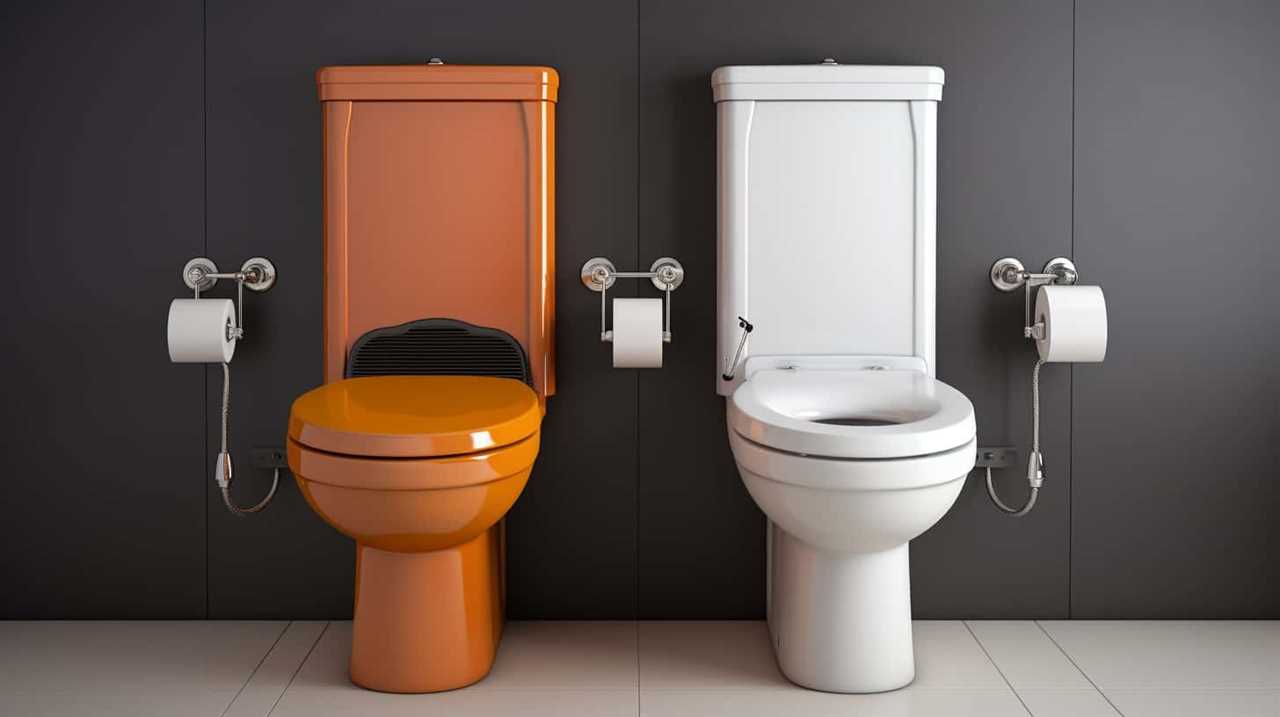
Key Takeaways
- Availability of water is the primary factor affecting flushes during a power outage
- The type of toilet and size of the water tank can affect the number of flushes possible
- On average, you can expect to get 3 to 5 flushes without power
- Alternative options like bucket flushing, gravity flush, and portable camping toilets can be used during a power outage
Factors That Affect Toilet Flushes During Power Outage
During a power outage, the availability of water is the primary factor that affects the number of toilet flushes we can have. When the power goes out, the water supply may also be disrupted, leading to limited flushing capabilities.
Other factors that can affect toilet flushes during a power outage include the type of toilet and the size of the water tank. Some toilets use gravity to flush, while others rely on a pump. Gravity-fed toilets are typically more efficient during a power outage as they require less water pressure to flush. Additionally, toilets with larger water tanks can provide more flushes before the water supply runs out.
Therefore, it’s important to consider water conservation during a power outage by minimizing unnecessary flushes and using alternative methods, such as using water from other sources or using waterless toilet options if available.
Average Number of Flushes Without Electricity
Without power, we typically get an average of about three to five flushes before the water supply runs out. In situations where electricity is unavailable, it becomes crucial to conserve water and be prepared for emergencies. Here are three key reasons why understanding the average number of flushes without electricity is important for water conservation and emergency preparedness:

- Limited water supply: When the power goes out, water is no longer being pumped into our homes. This means that the water stored in our toilets is the only resource available for flushing. By knowing the average number of flushes we can expect, we can better plan and manage our water usage during such situations.
- Hygiene and sanitation: Proper sanitation is essential for maintaining good health, especially during emergencies. By being aware of the average number of flushes without power, we can prioritize our water usage for essential sanitation needs, ensuring that hygiene standards are met.
- Resource management: Water is a valuable resource, and in times of crisis, it becomes even more precious. Understanding the average number of flushes without electricity promotes responsible resource management, encouraging us to use water efficiently and avoid unnecessary waste.
Being knowledgeable about the average number of flushes without power is a crucial aspect of water conservation and emergency preparedness. By conserving water and using it wisely, we can ensure the availability of this vital resource during challenging times.
Tips for Conserving Water During a Power Outage
To conserve water during a power outage, we can implement several practical tips that will help us make the most of our limited water supply.
One important tip is to store water in advance. Fill clean containers, such as plastic jugs or bottles, with tap water before the power goes out. Aim to store at least one gallon of water per person per day for drinking and sanitation purposes.
Another creative solution for toilet use without electricity is to line the toilet bowl with a plastic bag and secure it tightly. After each use, tie the bag and dispose of it in a designated area. This method saves water and prevents odors.
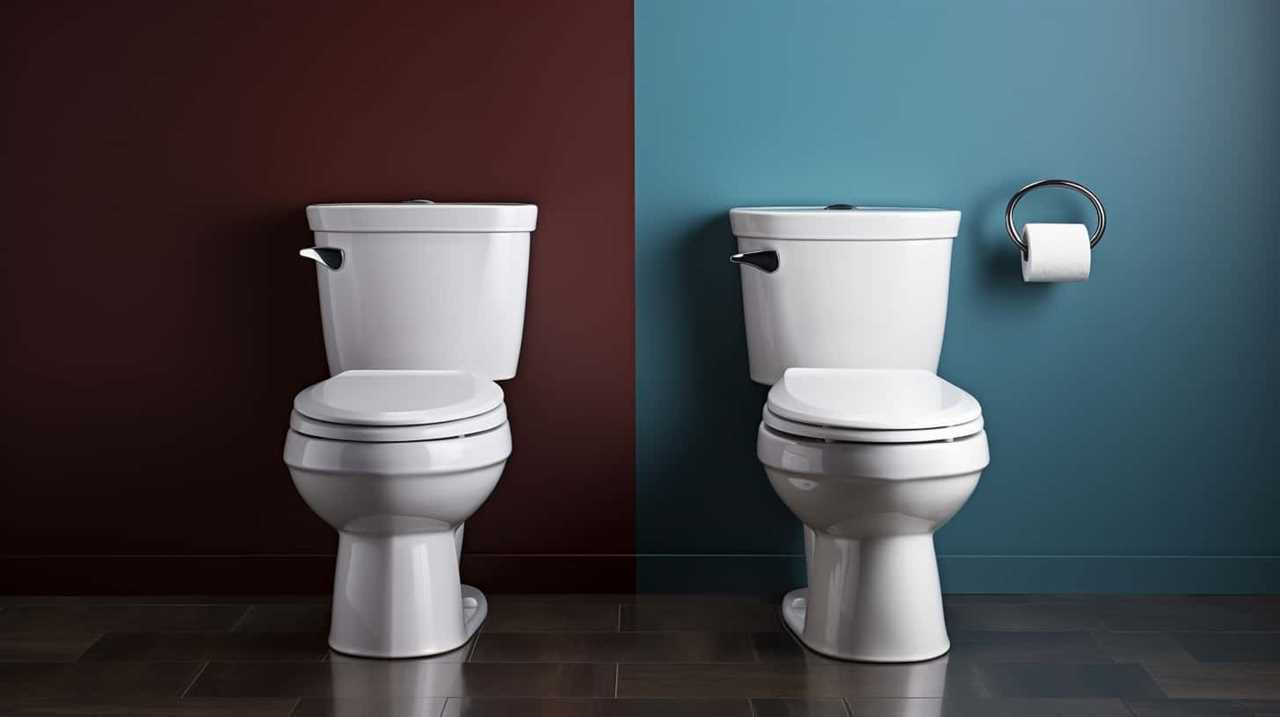
By following these tips for storing water and finding alternative options for toilet use, we can effectively conserve water during a power outage.
In the next section, we’ll explore alternative options for flushing toilets without power.
Alternative Options for Flushing Toilets Without Power
To conserve water during a power outage, we can explore alternative options for flushing toilets. Here are three emergency solutions and DIY toilet options that can come in handy when faced with such situations:
- Bucket Flushing: Fill a bucket with water and pour it directly into the toilet bowl. This will create enough force to flush the waste down the drain.
- Gravity Flush: If you have access to an elevated water source, such as a rain barrel or a bathtub filled with water, you can use gravity to create a flush. Simply pour the water into the toilet bowl from a height to generate enough pressure to flush.
- Portable Camping Toilets: Consider investing in a portable camping toilet, which can be used without water or electricity. These toilets often come with waste bags or chemical solutions to neutralize odors and make disposal easier.
Preparing for a Power Outage: Essential Supplies for Toilet Use
During a power outage, we need to ensure that we’ve essential supplies for toilet use. One option to consider is an emergency toilet, which can provide a temporary solution when the regular toilet isn’t accessible.

An emergency toilet typically consists of a sturdy bucket or container with a seat and a sealable lid to prevent odors. It’s important to line the bucket with a heavy-duty garbage bag or a specially-designed disposable liner to facilitate easy disposal.
Additionally, having a supply of toilet paper, hand sanitizer, and disposable gloves is essential for maintaining hygiene. Another useful item to have is a portable bidet, which can provide a more thorough cleaning experience without the need for running water.
These supplies can help ensure a comfortable and sanitary toilet experience during a power outage.
Frequently Asked Questions
What Are Some Common Causes of Power Outages That Could Affect Toilet Flushes?
Common causes of power outages that affect toilet flushes include storms, equipment failure, and grid overload. To conserve water during outages, use a bucket of water to manually flush the toilet.
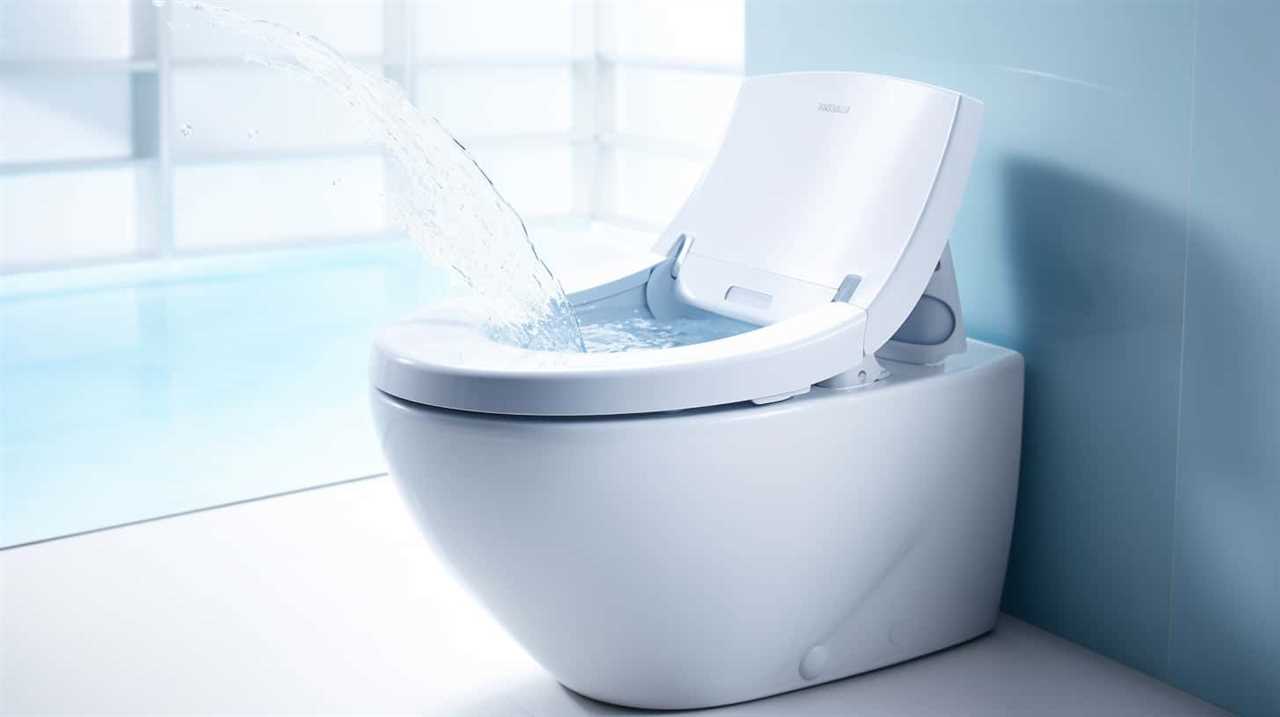
How Long Does It Typically Take for the Average Household to Run Out of Flushes Without Electricity?
During a power outage, it is crucial to conserve water. By following tips for emergency preparedness, such as using a bucket or filling the tank manually, we can prolong the number of flushes without electricity.
Are There Any Water-Saving Devices or Accessories That Can Be Used During a Power Outage to Conserve Water?
During a power outage, there are water-saving devices and accessories available to conserve water. These tools can help us maintain water efficiency without electricity and ensure that we are able to conserve this precious resource.
What Are Some Alternative Methods or DIY Solutions for Flushing Toilets Without Power?
When the power’s out, we need to get creative with DIY toilet solutions. Alternative flushing methods like filling a bucket with water and pouring it into the toilet can help conserve water and keep things flowing smoothly.
Besides Essential Supplies for Toilet Use, What Other Important Supplies Should Be Prepared for a Power Outage?
Water conservation during power outage is crucial. In addition to essential toilet supplies, backup power for toilets is important. It ensures uninterrupted flushing and prevents sanitation issues. Preparedness for a power outage should include these vital supplies.
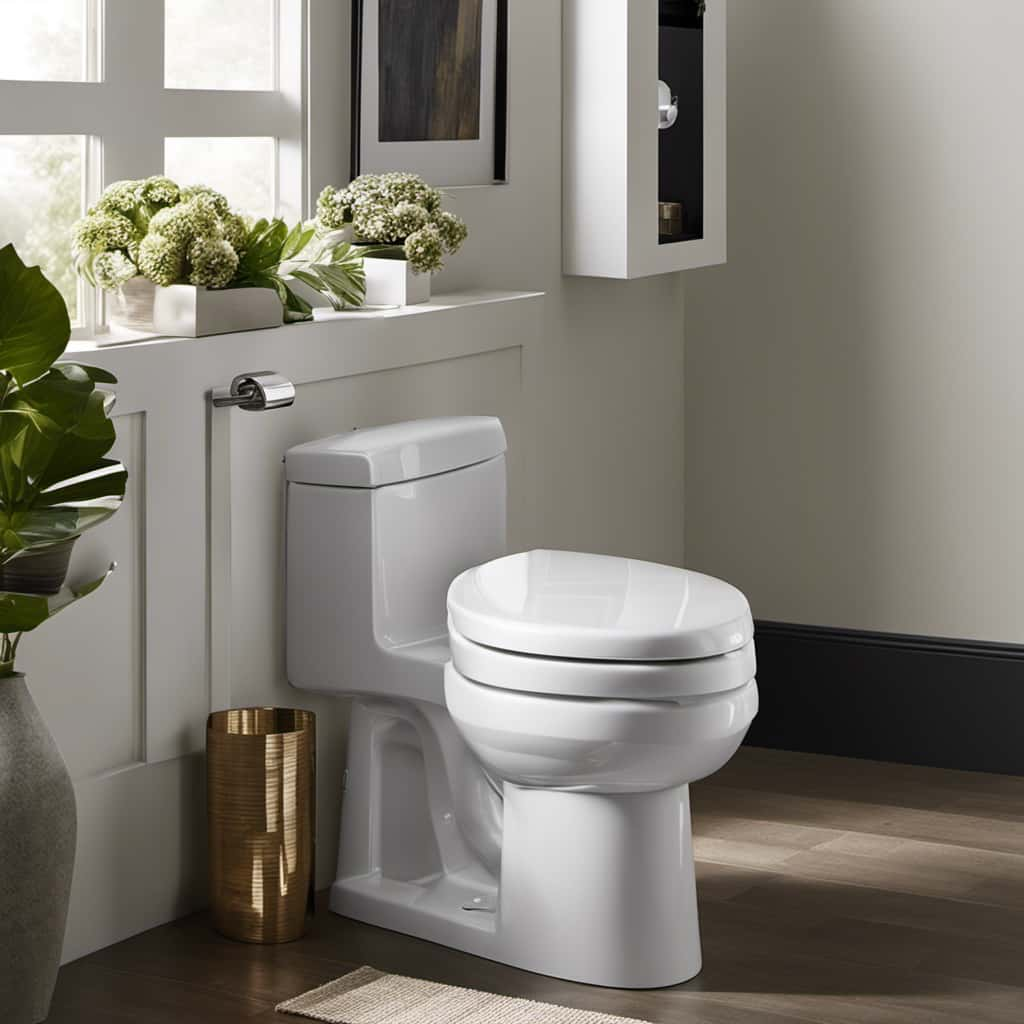
Conclusion
In conclusion, when it comes to toilet flushes during a power outage, several factors come into play.
On average, you can expect a limited number of flushes without electricity. However, conserving water is essential during these times.
Additionally, there are alternative options available for flushing toilets without power.
To prepare for a power outage, it’s crucial to have essential supplies on hand.

Like a well-prepared ship navigating through rough waters, with the right knowledge and resources, you can navigate through a power outage with minimal disruption to your toilet needs.



